Hager TYF642F Handleiding
Hager
Niet gecategoriseerd
TYF642F
Bekijk gratis de handleiding van Hager TYF642F (6 pagina’s), behorend tot de categorie Niet gecategoriseerd. Deze gids werd als nuttig beoordeeld door 63 mensen en kreeg gemiddeld 4.5 sterren uit 32 reviews. Heb je een vraag over Hager TYF642F of wil je andere gebruikers van dit product iets vragen? Stel een vraag
Pagina 1/6

Device layout (Fig. 1)
TYF642F
A1 A2 A3 A4 A5 A6 A7 A8
ALL OFF
ON / OFF /
L N
30V s
A1-A8 µ 10A 1 230VAC
230-240V
TP / S
A1 A2 A3 A4
A5 A6 A7 A8
1 Keypad for manual control
2 Programming LED
3 Programming button
4 KNX connection
5 Mains supply connection
6 Status LED outputs
7 Connexion of fan coil unit.
Operation
Controls (Fig. 2)
TYF642F
A1 A2 A3 A4 A5 A6 A7 A8
ALL OFF
ON / OFF /
L N
TP / S
6 status LED outputs
8 key : manual control
9 LED : permanent manual control
indicator
A key ON / 3 : switching on
Z LED ON / : on, manual control3
E key OFF / : switching o 4
R LED OFF / : o , manual control4
T key ALL OFF: all outputs are o
Status indication
The status LEDs indicate the output states.A1...A8
LED o output is o
LED on output is on
LED fl ashing
slowly
output in manual control
mode
LED fl ashing
fast
output disabled by
permanent manual control
mode
Modes of operation
Bus operation operation via touch sensors
or other bus devices
Temporary
manual control
manual operation locally with
keypad, automatic return to
bus operation
Permanent
manual control
mode
only manual operation locally
on device
H• Bus operation in manual control mode
disabled.
• Manual operation in the event of bus failure
enabled.
• After failure and return of bus voltage, the
device switches over to bus operation.
• After failure and return of mains voltage, the
device switches over to bus operation.
• Manual control mode can be disabled in
operation via bus telegram.
Activating the temporary manual control mode
Keypad operation has been programmed
beforehand and is not disabled.
- Press the key.
LED A1 fl ashing, LED remains o .
H After 5 s without key-press, the actuator
returns automatically to the bus mode.
Deactivating the temporary manual control
mode
The device must be in the temporary manual
control mode.
- No key-press for 5 s.
or
- press the key repeatedly until the actuator quits
the temporary manual control mode.
LEDs A1...A8 are no longer fl ashing, but indicating
the output status.
• Heating/cooling outputs : on deactivation of the
manual mode, the outputs switch into the position
then active, e.g. forced control (depending on
programming).
• Fan outputs : on deactivation of the manual mode,
Safety instructions
Function
System information
This device is a product of the KNX system and
complies with KNX directives. Detailed technical
knowledge obtained in KNX training courses is a
prerequisite to proper understanding.
The functionality of this device depends on the
software. Detailed information on loadable software
and attainable functionality as well as the software
itself can be obtained from the manufacturer‘s
product database.
Planning, installation and commissioning of
the unit is e ected by means of KNX-certifi ed
software. The full functionality is available with
KNX commissioning software from version ETS3.0f
onwards.
The product database, technical descriptions,
conversion programs and other utilities are
available in their latest version on our Internet page.
Designated use
• Switching of electrical fan coil units
• Switching of electrical AC 230 V consumers, e.g.
fans
• Mounting on DIN rail in xed installations (power
distributions or small boxes).
Product features
• Connection of a fan coil unit with up to 6 fan
stages or connection of fan coil units with up to 3
fan stages respectively
• Manual output control, provisional operation
• Control options for heating, cooling or combined
heating/cooling operation
• 2-pipe or 4-pipe operation
• Individual or hierarchical switching of fan stages
• Feedback
• Output state indication
• Disable function for each channel
A1 A2 A3 A4
A5 A6 A7 A8
TYF642F
A1 A2 A3 A4 A5 A6 A7 A8
ALL OFF
ON
/OFF
/
LN
30V s
A1-A8 µ 10 A AC1 230 V
230-240V
TP / S
:.,nB
tebis
zDual fan coil actuator
rActuador de ventilo-convectores,
2 canales
6LE004143A
1 6LE004143A
q• Electrical equipment must be installed
and fi tted by qualifi ed electricians
only. Observe the current accident
prevention regulations.
• Failure to observe the instructions may
cause damage to the device
and result in fi re or other hazards.
• The device is not suited for safe
disconnection of the mains supply.
• Do not connect consumers
for SELV / PELV voltages.
• Do not connect three-phase AC
motors.
• These operating instructions are part
of the product and must be left with
the fi nal customer.
TYF642F

the outputs switch into the position then active,
e.g. forced control (depending on programming).
• Switching outputs : on deactivation of the
manual mode, the output relays remain in their
current position.
Activating the permanent manual control mode
Keypad operation has been programmed
beforehand and is not disabled.
- Press the key for at least 5 s.
LED is on, LED is flashing, permanent A1
manual control mode is activated.
Deactivating the permanent manual control
mode
The device is in the permanent manual control
mode.
- Press the key for at least 5 s.
The LED is o, the bus mode is on.
• Heating/cooling outputs : on deactivation of the
manual mode, the outputs switch into the position
then active, e.g. forced control (depending on
programming).
• Fan outputs : on deactivation of the manual mode,
the outputs switch into the position then active,
e.g. forced control (depending on programming).
• Switching outputs : on deactivation of the
manual mode, the output relays remain in their
current position.
Operating the outputs
In the manual control mode, the outputs can be
operated directly. Depending on programming, the
operation of switching one output may also aect
other outputs.
The device must in the permanent or temporary
manual control mode.
- Press the key repeatedly until the desired
output is selected.
The LED of the selected output is flashing.A1...A8
The ON /3 and the OFF / 4 LEDs indicate the
status.
- Output operation with the ON / or the OFF / 3 4
key.
• Heating/cooling outputs : opening or closing
the valve.
• Fan outputs : selecting the fan stage.
• Switching outputs : switching on or o.
The selected output switches on or o.
The ON /3 and the OFF / 4 LEDs indicate the
status.
H• Depending on programming and selected
output, several outputs are switched at the
same time.
• Heating and cooling of a fan coil output are
never activated at the same time.
• When the heating or the cooling output is
active, at least the first fan stage is active as
well.
• Temporary manual control: after all outputs
have been selected one after another, the
device quits the manual control mode with
the next brief press.
Switching o all outputs
The device must in the permanent manual control
mode.
- Press the ALL OFF key.
All outputs are switched o.
Disabling individual outputs
The device must in the permanent manual control
mode.
- Press the key repeatedly until the desired
output is selected.
The LED of the selected output flashes.A1...A8
- Press the keys ON / and OFF / 3 4 simultane-
ously for at least 5 s.
The selected output is disabled.
All status LEDs of the selected output
A1...A8 are flashing fast.
- Activate the bus mode (deactivate the permanent
manual control mode).
H
• A disabled output can be operated in the
manual control mode.
• If a disabled output is selected in the manual
control mode, the LEDs are flashing twice
briefly at intervals.
Re-enabling the outputs
The device must in the permanent manual control
mode.
- Press the key repeatedly until the desired
output is selected.
The status LEDs of the selected output
A1...A8 flashes twice briefly at intervals.
- Press the keys ON /3 and OFF / 4simultane-
ously for at least 5 s.
The LED of the selected output is flashing A1...A8
slowly.
- Activate the bus mode (deactivate the permanent
manual control mode).
Information for qualified electricians
Fitting and electrical connection
Installing the device
• Observe the admissible temperature range.
Ensure sucient cooling.
• Snap the device onto a mounting rail in acc. with
EN 60715. The connecting terminals must be at
the top.
Connection diagram (Fig. 3)
A1 A2 A3 A4
A5 A6 A7 A8
30V s
Bus
L
N
TYF642F
A1 A2 A3 A4 A5 A6 A7 A8
ALL OFF
ON / OFF /
L N
30V s
A1-A8 µ 10A 1 230VAC
230-240V
TP / S
Connecting the device
Observe the admissible loads
G Assignment of the outputs depends on the
projected mode of operation (tables 1, 2 and 3).
Control options (Tab. 1)
Mode Function
1 2-pipe heating only
2 2-pipe cooling only
32-pipe heating/cooling, switch-over
object
4 4-pipe heating/cooling, switch-over
object
54-pipe heating/cooling, actuating
variable preset
G Outputs that are not used for fan stage control
can be used for simple switching. Assignment
of output terminals see project design data.
1- Connect the bus line to the bus terminal 4.
2- Connect the mains supply 5.
3- Connect the fan coil units to the actuator outputs
as provided for in the project design.
H• One fan coil output with up to six fan
stages: connection example in Fig. 3; output
assignment information in table 2, Fig. 4 and
Fig. 5.
• Two fan coil outputs with up to three fan
stages respectively: connection example in
Fig. 6; output assignment information in table
3, Fig. 7 and Fig. 8.
• Connection details for fan coil units can be
found in the documentation of these devices.
Output connection for 1 fan coil output (Tab. 2)
Mode A1 A2 A3…A8
1heating valve - fan stages
2cooling valve - fan stages
3 heating/
cooling valve
- fan stages
4cooling valve heating
valve
fan stages
5 cooling valve heating
valve
fan stages
Single-channel fan stage pattern with
hierarchical switching – current-sourcing
outputs (Fig. 4)
A3 A4 A5 A6 A7 A8
1100000
2110 0 0 0
31110 0 0
411110 0
5111110
6111111
2 6LE004143A
q• Electric shock in case of accidental
contact with live parts.
• Electric shocks can be fatal.
• Before working on the device, cut out
the mains supply and cover up live
parts in the surroundings.

Single-channel fan stage pattern with individual
switching – current-sourcing outputs (Fig. 5)
A3 A4 A5 A6 A7 A8
110 0 0 0 0
20 0 0 0 01
30 0 0 0 01
40 0 0 0 01
50 0 0 0 01
60 0 0 0 0 1
Connection of the load for 2 fan coil outputs
(Fig. 6)
A1 A2 A3 A4
A5 A6 A7 A8
30V s
Bus
L
N
TYF642F
A1 A2 A3 A4 A5 A6 A7 A8
ALL OF F
ON / OFF /
L N
30V s
A1-A8 µ 10A 1 230VAC
230-240V
TP / S
Output assignment for 2 fan coil outputs (Tab. 3)
Mode A1 / A5 A2-4 / A6-8
1heating valve fan stages
2cooling valve fan stages
3 heating/cooling
valve
fan stages
Dual-channel fan stage pattern with hierarchical
switching – current-sourcing outputs (Fig. 7)
A2 A3 A4 A6 A7 A8
11 10 0 0 0
21 1 1 10 0
31 1 1 1 1 1
Dual-channel fan stage pattern with individual
switching – current-sourcing outputs (Fig. 8)
A2 A3 A4 A6 A7 A8
11 10 0 0 0
20 0 0 01 1
30 0 0 01 1
Commissioning
• Switch on the bus voltage.
• Assign physical address.
• Load the application software into the device.
• Note the physical address on the device label.
• Switch on the mains voltage at the outputs.
Technical data
KNX Medium ........................................................ TP 1
Commissioning mode ....................... S mode (ETS)
KNX supply ............................................. 21 - 32 V s
KNX power consumption ................. max. 125 mW
Rated voltage .................................... 110 / 240 V v
Mains frequency ....................................... 50 / 60 Hz
Total dissipated power .......................... max. 3 W
Ambient temperature
...................... -5 °C ... +45 °C
Storage temperature ......................-25 °C ... +70 °C
Fitting width ............................... 72 mm / 4 modules
Weight ................................................... approx. 290 g
Connection
KNX connecting terminals .....................................
230 V supply and outputs ............screw terminals
Solid wire ............................................ 1,5...4 mm²
Stranded wire without ferrule ........... 0,75...4 mm²
Stranded wire with ferrule ............... 0,5...2,5 mm²
Output contact type potential-free .........................
.......................................... n.o. contact (μ-contact)
Switching voltage AC ....................... 230/240 Vv
Switching capacity AC1 10 A .................................
Switching capacity AC3 (cos ϕ = 0,65) ..........10 A
Loads per output
Resistive load ........................................... 2300 W
Capacitive load ..........................10 A maxi 140 μF
Motors ..................................................... 1380 VA
Max. inrush current 200 μs 800 A ..........................
Max. inrush current 20 ms 165 A ...........................
Upstream protection ................circuit breaker 10A
Lamp loads
Incandescent lamps ................................. 2300 W
230 V halogen lamps 2300 W ...............................
LV halogen lamps with
TRONIC transformers ................................1500 W
LV halogen lamps with
Inductive transformers .............................. 1200 W
Fluorescent lamps T5/T8 .......................................
non-compensated .................................... 1000 W
Parallel compensated ... 1160 W / 140 μFLead-lag
circuit .......................................... 2300 W / 140 μF
Compact fluorescent lamps
non-compensated .....................................1000 W
parallel compensated ................. 1160 W / 140 μF
Mercury vapour lamps
non-compensated ..................................... 1000 W
parallel compensated ................. 1160 W / 140 μF
Electronic Ballasts see product documentation ....
Help in case of trouble
Manual control with keypad not possible
Cause 1
Manual control mode
not programmed
Program the device for
manual control
Cause 2
Manual control mode
disabled via the bus
Enable the manual
control mode
Cause 3
No mains voltage Switch on the mains
voltage.
Check the fuses.
Output control not possible
Cause
Output disabled Undo disabling
None of the outputs operational
Cause 1
All outputs are
disabled
Undo disabling
Cause 2
Permanent manual
control mode active
Deactivate the
permanent manual
control mode (switch
this mode o)
Cause 3
Application software
stopped, program-
ming LED flashing
Make a reset :
Disconnect the device
from
the bus, reconnect after
5 seconds
Operation via the bus impossible
Cause 1
No bus voltage Switch on the bus
voltage; have the
installation checked by a
qualified electrician
Cause 2
Application
software stopped,
programming LED
flashing
Disconnect the device
from the bus, reconnect
after 5 seconds
Cause 3
No or faulty
application software
Check programming
and rectify
3 6LE004143A
Correct Disposal of This product
(Waste Electrical & Electronic
Equipment)
(Applicable in the European Union and other
European countries with separate collection
systems).This marking shown on the product or its
literature indicates that it should not be disposed
with other household wasted at the end of its
working life. To prevent possible harm to the
environment or human health from uncontrolled
waste disposal, please separate this from other
types of wastes and recycle it responsibly to
promote the sustainable reuse of material
resources. Household users should contact either
the retailer where they purchased this product, or
their local government office, for details of where
and how they can take this item for environmentally
safe recycling.
Business users should contact their supplier and
check the terms and conditions of the purchase
contract. This product should not be mixed with
other commercial wastes of disposal.
Usable throughout Europ
e
å
and in Switzerland
Product specificaties
| Merk: | Hager |
| Categorie: | Niet gecategoriseerd |
| Model: | TYF642F |
| Kleur van het product: | Grijs |
| Breedte: | 72 mm |
| Diepte: | 70 mm |
| Hoogte: | 90 mm |
| Internationale veiligheidscode (IP): | IP20 |
| Bedrijfstemperatuur (T-T): | -5 - 45 °C |
| Aantal producten inbegrepen: | 1 stuk(s) |
Heb je hulp nodig?
Als je hulp nodig hebt met Hager TYF642F stel dan hieronder een vraag en andere gebruikers zullen je antwoorden
Handleiding Niet gecategoriseerd Hager
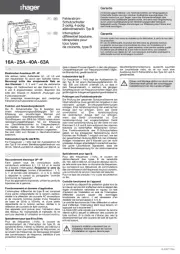
12 Mei 2025
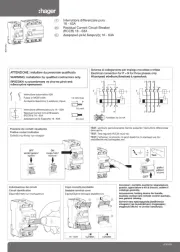
12 Mei 2025

12 Mei 2025
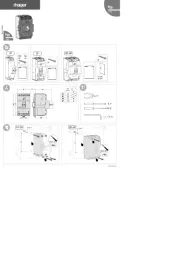
12 Mei 2025
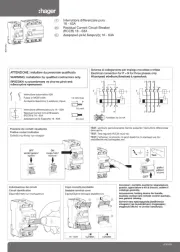
12 Mei 2025
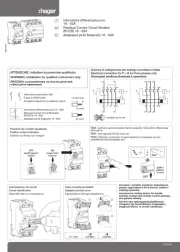
12 Mei 2025
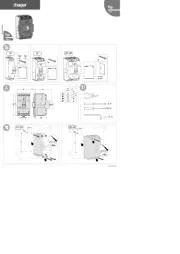
12 Mei 2025
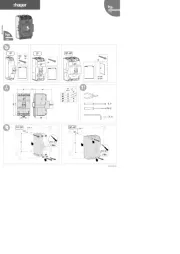
12 Mei 2025
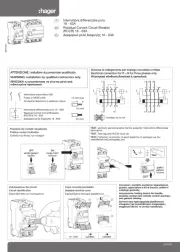
12 Mei 2025
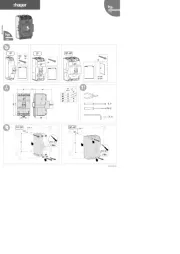
12 Mei 2025
Handleiding Niet gecategoriseerd
- Audix
- Masport
- Pulsar Observatories
- FED
- Beemoo
- KED
- Tot Tutors
- Strong
- Bomann
- Bolsey
- Tannoy
- Lauten Audio
- Pippi
- Sabo
- IFM
Nieuwste handleidingen voor Niet gecategoriseerd

3 Augustus 2025
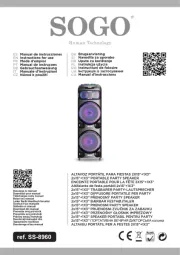
3 Augustus 2025
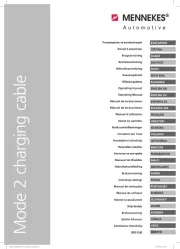
3 Augustus 2025
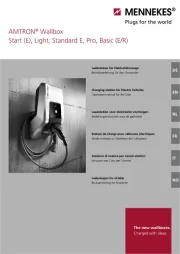
3 Augustus 2025
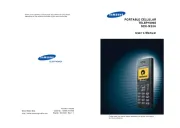
3 Augustus 2025

3 Augustus 2025

3 Augustus 2025

3 Augustus 2025
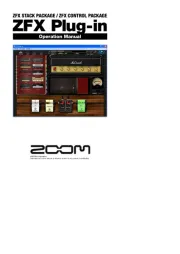
3 Augustus 2025
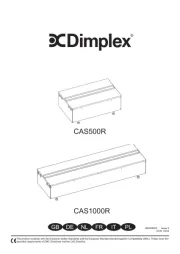
3 Augustus 2025